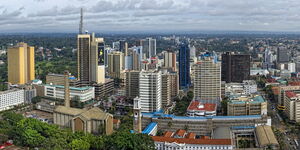The Kenya National Archives, a famous complex located at the heart of Nairobi, along Moi Avenue, is more than just a stopover or a meeting point.
This building not only stands out as one of the most unique structures in the country's capital due to its antique architectural design, but also holds a wealth of Kenyan and African history.
Initially, the building was originally intended to be a bank building when construction kicked off in 1930, and for 34 years, it served as the headquarters of the National and Grindlays Bank.
However, two years after the country gained independence, in 1965, the building was formally converted to the Kenya National Archives and Documentation Service (KNADS) through an Act of Parliament and has since then been utilised for the management of all public records.
KNADS operates under the Ministry of Gender, Culture, the Arts and Heritage, and apart from Nairobi, KNADS has other branches in Mombasa, Kisumu, Nakuru, Kakamega, and Nyeri.
In 1990, the government further incorporated other national documentation and information retrieval services, which were used by government publications and other documents.
Inside the walls of the famous Kenya National Archives in Nairobi, over 40,000 historical photographs, parliamentary records, books, documents, and artefacts from across the country and the continent are held.
On the ground floor, the building holds a collection of art, historical photos, cultural artefacts, ancient furniture, armaments, and musical instruments.
This floor also holds the Murumbi Gallery, which is named after Kenya's second Vice President, Joseph Murumbi. The gallery, which is recognised as the largest Pan-African art gallery on the continent, holds different ancient art collections from different African regions and communities.
As you take the stairs to the first floor, you will come across photographs of the late President Daniel Moi’s early history and some Mau Mau detention camps. The first floor also holds other photos that explain the country's transition from the colonial era to the present day period.
The second floor of the building gets more interesting. On this floor, you will get to see other artefacts, including microfilms, audio and visual materials, and library material.
Furthermore, on this floor, armament used during Kenya's struggle for independence, such as arrows, spears, daggers, among others, are also displayed.
Researchers and historians are some of the individuals who are found exploring the building; however, it is actually very easy for anyone to get in and delve into Kenya's history.
The Kenya National Archives has an entrance fee of Ksh50 for Kenyan citizens, while non-citizens are required to pay Ksh200 to enter the building.
Additionally, one has to pay Ksh200 as a membership fee to use the KNA's library services.












